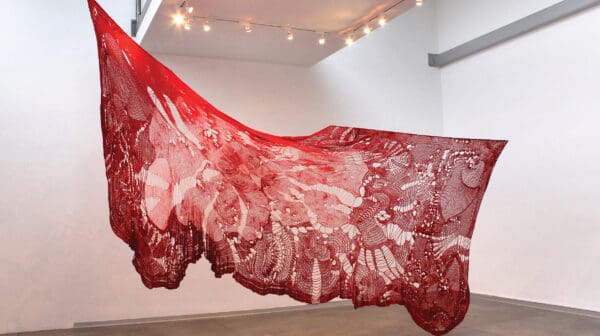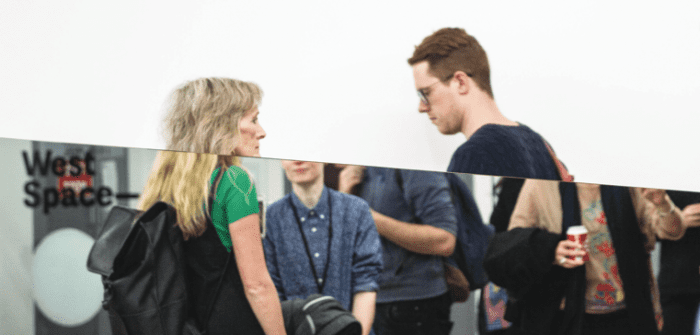
First Nations artists share their sun stories
For the 24th Biennale of Sydney, Paris-based Fondation Cartier has commissioned 14 new works by Indigenous artists across the globe, curated by renowned Kuku Yalanji artist, Tony Albert.
The art world fears fraud and forgery, the kind that might sneak a van Gogh of dubious authenticity into a national gallery. Meanwhile, art consultants, ever quick to make the case for turning a profit, note that it’s only a forgery if the fake in question is intentionally palmed off as genuine. Pastiches, replicas and reproductions are therefore real in themselves. Surviving a century where anything could be considered art, has the anxiety of fraud perhaps shifted to the artists themselves?
The Fraud Complex asked 11 artists to consider how the duality of genuine versus fake plays out in everyday life, though, not surprisingly, the question swung back to notions of the self, artistic self-worth, and to wider concerns surrounding race and gender politics.
Artsheaven.com, labelled as the artist and a legitimate online shop, states on their website that by buying a reproduction, “you’re not trying to fool anyone into believing that you own the real thing but at least you’ll enjoy the illusion that you have an original”.
Illusion also ran through diverse pieces such as Hany Armanious’s Body Swap, a sculpture whose mirrored surface splices viewers standing on either side of it. Meanwhile, Beth Dillon’s Tallest artist in Next Wave features a deconstructed gold lamé gown draped over a tall ladder, a framed certificate claiming her title with, what looks like, the towering gold heels that helped her ‘earn’ the prize. In a similar vein, Abdul Abdullah’s Why can’t I be angry, 2016, draws on themes of artists seeking recognition and being overlooked. Underneath a flag machine-embroidered with the artwork’s title are four ceramic trophies, awarded to ‘Most fair’, ‘Most great’ and so on. Abdullah, like Dillon, points at the triviality of awards but, specifically, the subjectivity of art prizes. His lack of punctuation in the question signals a kind of lethargy and tacit acceptance of the status quo.

A low-grade anxiety simmered under the surface in The Fraud Complex, perhaps a pre-emptive emotion, as Next Wave was dealt a blow with the loss of its Australia Council funding during its 5–22 May run. Though, interestingly, Aboriginal and Torres Strait Islander arts organisations fared well in this round of four-year funding, which was marred by cuts.
Quandamooka woman Megan Cope’s Discover your Aboriginality, 2016, is an installation that looks like a sign-up table for a blood drive. Application in-trays and out-trays and a mug full of blue pens suggest it’s never been a better time to discover your Aboriginality, or failing that, “offset white guilt”. The application form asks whether applicants have ever heard “Nana or Pa say they were touched with the tar brush?” and, more gently, whether you have “ever felt an affinity with Aboriginal culture”. The rage of this piece is barely contained by its neat little faux-bureaucratic set-up.
The inclusion of Bindi Cole’s Not Really Aboriginal (series) from 2008 is an intelligent choice from the young curatorial team Johnson+Thwaites. The artist, of Wathaurung descent, has taken photographs of herself and her family in innocuous suburban settings, albeit with blackface applied to their ‘pale’ skin. Cole’s work unpacks the baggage that every Australian carries around Aboriginal Australia, an inescapable condition of living on this soil.
Questions of cultural authenticity also underpin Mexican-born artist Yoshua Okon’s single-channel 15-minute video The Indian Project, 2016, a sardonic piece on community television, small towns and the kitschy cultural appropriation of Native Americans. Elderly, bespeckled Katie Willet is presenting a lo-fi, factual program on “the whole history of the Skowhegan Indians” without actually talking about anything meaningful, which is interspersed with ceremonial chanting and gestural choreography by a mature-aged white crew.
Humour also pervaded Tully Arnot’s Waterfall, 2016, a shutter- stock image of a waterfall printed on fabric (clearly watermarked by the stock-image behemoth) that scrolls through by motor. Tyza Stewart’s sensitive oil painting Self Portrait, 2015, Abdul-Rahman Abdullah’s Monster Maker, 2015, and That Self, a joint video effort by Techa Noble, Casey Ledler and Jordan Graham, all dealt with ideas of self-representation and identity. Though this exhibition looked at duplicity through a wide social lens, its strongest message (perhaps unintended) was the uncomfortable idea that fraud covertly exists in art, that the audience is complicit in accepting ‘anything’ as art, which tends it towards the denigration of itself.
The Fraud Complex
West Space
6 May – 4 June 2016